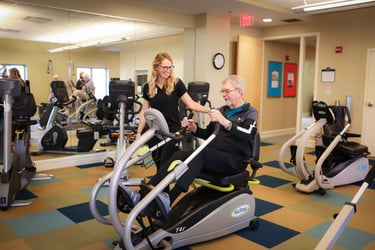 Sometimes it’s hard to juggle all the daily responsibilities in life. Balancing work responsibilities can be difficult enough but trying to also maintain a social life at the same time can feel impossible. Being able to manage your time can be invaluable in many ways. There many benefits of having time management skills and having the right strategies can improve your skills.
Sometimes it’s hard to juggle all the daily responsibilities in life. Balancing work responsibilities can be difficult enough but trying to also maintain a social life at the same time can feel impossible. Being able to manage your time can be invaluable in many ways. There many benefits of having time management skills and having the right strategies can improve your skills.
To start, time management is a process in which you plan and control the amount of time dedicated to certain tasks. This will in turn boost your efficiency, effectiveness, and productivity during the day. Controlling your time will allow you to become better at organizing and in turn will help you control your time both personally and professionally. Having the necessary skills to manage your time has different benefits for people, including:
- Increased time for self
- Improved feeling of accomplishment
- Improved self esteem
- Increased satisfaction in life
The more you can limit work stress and the more time you spend on yourself, the happier you will be. So how do we improve our time management skills? Here are some strategies you can implement:
- Know How You Spend Your Time: Making a time log of what you do during a day can help determine how you are already using your time. Over the span of a week or two, record everything you did in a 15-30 minute interval. Evaluate how you used that time. What time of the day are you most motivated? What tasks took the most time? Where do you value your time the most? Reflect on if you’re investing your time wisely, or if you need to reinvest time in other things.
- Set Priorities: Distinguishing what is urgent and what is important determines whether you’re managing your time effectively. Some of the most important tasks are not the urgent tasks, but that does not mean that you should let the urgent tasks control your life. Determining what tasks must be done can help you gain control of your life while reducing the amount of tasks that may become urgent.
- Use a Planning Tool: Utilizing a planning tool can increase your productivity. Writing down tasks, making notes on your schedule, and jotting down items to remember can free up brain space to focus on other, more important tasks. Review your calendar daily, synchronize your apps if you use two different types of planning tools, and always have a backup. Some examples of a planning tool: Time Trackers, Time Savers, Calendars, Task Managers, Habit Developers, etc.
- Get Organized: You can’t manage your time if you’re disorganized, and research has shown that clutter has a negative impact on perceived well-being.
- Stop Multi-Tasking: Humans in general are not efficient at multi-tasking. Studies show that multi-tasking doesn’t save time or increase efficiency. In fact, it does the opposite. Routine multi-tasking may lead to difficulty concentrating and maintaining focus.
Time management is a skill that can be vital to one’s success. What are some other strategies that you have found to help manage your time?

 Our fitness management staff members have some of the best stories around on the impact their fitness programs are having on resident lives in the senior living communities we serve. They hear comments from residents or their family members, they see new faces in classes, and they track the data in programs and services that demonstrate solid engagement. Our staff takes great pride in these affirmations knowing that the work they are so passionately committed to is truly making a difference not just for residents but also for the culture of a community as a whole.
Our fitness management staff members have some of the best stories around on the impact their fitness programs are having on resident lives in the senior living communities we serve. They hear comments from residents or their family members, they see new faces in classes, and they track the data in programs and services that demonstrate solid engagement. Our staff takes great pride in these affirmations knowing that the work they are so passionately committed to is truly making a difference not just for residents but also for the culture of a community as a whole.
 Olympic athletes are viewed as superheroes and celebrities; strong, brave individuals at the peak of their career. The words unrealistic or unattainable may have just come into your thoughts; mine too. After taking a step back and thinking about these superstars, there are many lessons we can learn from them. Years and years of preparation go into becoming an Olympic athlete and it is a full time job. What can we learn from these elite athletes, how can we train like them, how can they be role models to us on a wellness journey? Think about the qualities an Olympian possesses and how you can translate these into your life.
Olympic athletes are viewed as superheroes and celebrities; strong, brave individuals at the peak of their career. The words unrealistic or unattainable may have just come into your thoughts; mine too. After taking a step back and thinking about these superstars, there are many lessons we can learn from them. Years and years of preparation go into becoming an Olympic athlete and it is a full time job. What can we learn from these elite athletes, how can we train like them, how can they be role models to us on a wellness journey? Think about the qualities an Olympian possesses and how you can translate these into your life.